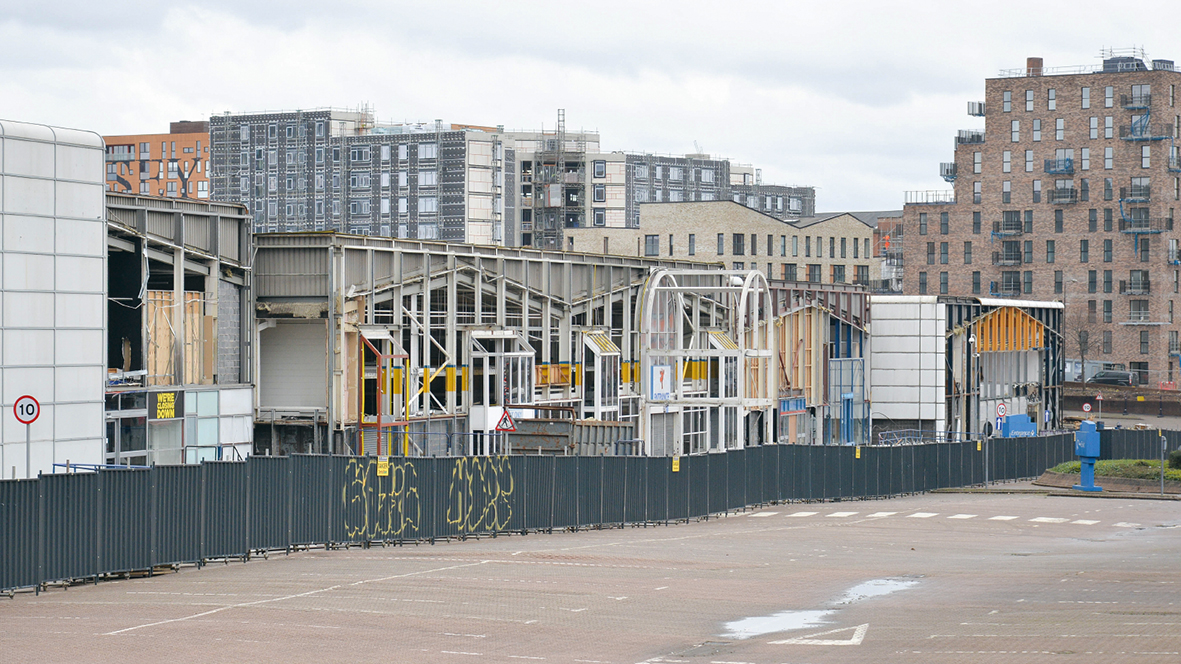
Image © Men Media
Its appeal is understandable, but social infrastructure mustn't be overlooked
Everyone is looking for a way [to build houses] that's quick and doesn't rely on the standard model that currently builds most of our houses. Changes in shopping habits mean that town centres and retail parks are often sitting empty, looking ugly. Given they already have things such as transport infrastructure, and there's been a drive to use brownfield sites before we touch undeveloped land, you can see why people would think that redeveloping retail parks into housing is a good idea.
There are ways it can work, but there are also ways it absolutely shouldn't – such as permitted development, which doesn't have to reflect need or abide by council rules, and frequently leads to unsafe homes. Also, there are questions that don't always get asked. Residential areas need schools and GP surgeries, and if social infrastructure isn't in place, it can be hard to build up. If it's a big site, you also want to see masterplanning and proper engagement, not just with residents who already live in an area, but with those who may move in.
We should leave it to local authorities to designate appropriate sites, and make sure that things such as Section 106 and the Community Infrastructure Levy (CIL) are enforceable. Strong planning is vital to getting the outcomes you want.
Robin White, public affairs manager, Shelter
Housing won't be appropriate in every case, but it will work in a lot of them
All choices regarding where to build homes have political and other challenges. It's not easy to knock down existing streets, and the green belt is a whole other debate. So this is an opportunity where the politics should be easier.
Put crudely, the current approach is to clear big-box retail parks and put in as much housing as you can. Create Streets' Better Brownfield report looked at three things: how much of this type of space there is in London; where it is; and how much housing we could put into it. We used the information to work with Savills, to look at the economics and how these developments could fund themselves. And we suggested ways the draft London Plan could be more supportive of this.
We estimated that there are 1,220 low-intensity commercial or retail sites in London, covering 6,122 ha an – area 43 times larger than Hyde Park. Most of these sites are surrounded by tarmac, which is incredibly inefficient land use; you could have the same amount of retail space, but all sorts of other things as well. Housing won't work in every case, but it will in a lot of them, and that's a huge opportunity for a non-trivial amount of housing.
Nicholas Boys-Smith, founding director of Create Streets and co-chair of the Building Better, Building Beautiful Commission
"Housing won't work in every case, but it will in a lot of them"
Schemes have to benefit the community and deliver affordable housing
Just outside my ward there is a retail park of single-storey sheds and a large Sainsbury's. In the middle of a housing crisis, you could do a lot more with the land. There's a local push for a community-led masterplan where we'd build lots of housing with shops there as well.
We need schemes that aren't just about landowners realising they can make a large profit by flipping land over to housing – we need schemes that benefit the community and deliver the affordable housing we need.
Councils need to take a leadership role. But after years of austerity, they're very cut back in terms of staff and don't necessarily have the powers they need. If there's no realistic prospect for councils to use a bit of stick as well as carrot, they're less likely to get landowners' attention.
Tom Copley, Labour Councillor for the London Borough of Lewisham and Chair of the Greater London Authority housing committee
The ideal scenario is creating retail and housing that benefit each other
We've developed a lot of retail schemes, predominantly in the north of England, but we're now seeing a refocusing of investor demand into logistics and build-to-rent.
Post-2008 there was a retail slump from the credit crunch, but now we're seeing broader changes to how people shop. Put simply, the shopping that's gone online, comes off the turnover of physical stores. Pick up the property press and you'll find, for example, Intu planning to redevelop land adjacent to their shopping centres. And I think we'll see that more and more.
We've seen a mixture of department stores, car parks and service spaces come to market. The nirvana is to redevelop just part of the retail as housing, and create more customers and more footfall for what remains.
Johnny Caddick, director, Caddick Developments
